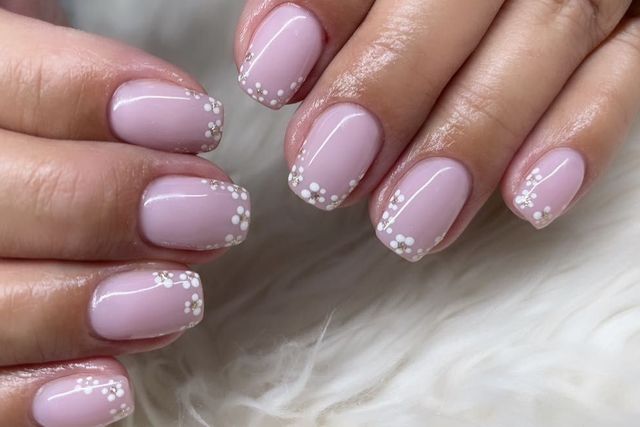When it comes to self-care, visiting a nail salon can be a relaxing and rewarding experience. But beyond the beautiful results—glossy nails, perfect pedicures, and artistic designs—your health and safety should always come first. Unfortunately, not all salons maintain the same high standards of cleanliness and hygiene. So how do you know if a salon is truly safe?
We’ve gathered tips from top beauty and health experts to help you make informed decisions. Whether you’re a salon regular or visiting for the first time, here’s how to spot a clean and safe Blossom Nail Salon Branham San Jose.
1. First Impressions Matter: Check the Cleanliness Right Away
Your first clue about a salon’s hygiene standards is often visual. When you walk in, take a moment to look around. Are the floors clean? Is the front desk organized? Are the workstations free from nail dust, spills, or clutter?
Red Flags to Watch For:
- Dirty or stained towels
- Used nail files or buffers left out
- Overflowing trash cans
- Unpleasant odors (other than nail polish or acetone)
Expert Insight:
“A clean environment is a reflection of the salon’s overall hygiene practices,” says Dr. Melissa Clarke, a health and wellness expert. “If the front looks dirty, the back probably is too.”
2. Proper Disinfection Protocols Are Non-Negotiable
One of the most important aspects of salon hygiene is how tools and equipment are cleaned. Reusing tools without proper sterilization can spread bacteria, fungi, and even viruses like hepatitis or COVID-19.
What to Look For:
- Autoclaves or UV Sterilizers: Ask how the salon sterilizes its metal tools. A proper salon uses an autoclave or a hospital-grade disinfectant solution.
- Single-use Items: Files, buffers, and pumice stones should be new for each client.
- Covered and Labeled Tool Kits: Tools should be kept in clean, closed containers until used.
Pro Tip:
Don’t be afraid to ask the technician, “How are your tools disinfected?” A reputable salon will gladly explain their sanitation process.
3. Technician Hygiene: Are They Practicing What They Preach?
Even if the salon environment looks clean, the nail technician’s personal hygiene is equally important.
Checklist:
- Are they wearing gloves or washing hands between clients?
- Do they sanitize your hands before starting?
- Are they using clean tools and changing towels for each customer?
Expert Opinion:
“Cross-contamination is a serious issue,” warns licensed nail instructor Susan Yoon. “If a technician touches multiple surfaces or clients without washing hands, that’s a red flag.”
4. Ventilation: Don’t Underestimate Fresh Air
Nail products often contain chemicals that release strong fumes. Proper ventilation is essential to ensure a safe and breathable environment for both clients and staff.
Signs of Good Ventilation:
- You don’t feel overwhelmed by fumes when you walk in
- The salon uses air purifiers or exhaust fans
- Windows are occasionally open or there’s an air circulation system
Why It Matters:
Prolonged exposure to chemicals like formaldehyde, toluene, and dibutyl phthalate (DBP) can cause headaches, dizziness, and long-term health problems.
5. Licensing and Certifications on Display
Legitimate salons and nail technicians are usually proud to display their licenses. In many states and countries, this is required by law.
Look For:
- Valid salon license visible at the front desk
- Individual licenses for each nail tech, usually displayed at their station
- Certifications for sanitation training or continued education
Insider Tip:
Check the expiration dates on those licenses—some salons display old, outdated ones just for show.
6. Customer Reviews and Word of Mouth
Before stepping foot in a new salon, it’s wise to do a little research.
Where to Check:
- Google Reviews
- Yelp
- Social media (Instagram and Facebook)
- Word-of-mouth from friends or family
Look for consistent praise about cleanliness and customer service. If multiple reviews mention infections, dirty tools, or unhygienic practices—take it seriously.
Pro Tip:
Call ahead and ask specific questions like: “How do you sterilize tools?” or “Do you offer disposable pedicure liners?”
7. Safe Pedicure Practices: Foot Spas and Water Basins
Pedicure stations can be a breeding ground for bacteria if not cleaned thoroughly between clients.
Best Practices:
- Pedicure tubs should use disposable liners or be thoroughly cleaned and disinfected after each use.
- Jets should be cleaned according to manufacturer guidelines.
- Disposable foot files and buffers should be used.
What Experts Say:
“Infections like athlete’s foot, nail fungus, and even staph can be spread in unclean foot baths,” notes Dr. Karen Lin, a podiatrist. “Cleanliness here is crucial.”
8. No Cuts, No Excuses
Cutting cuticles may be common in salons, but it’s actually discouraged by dermatologists. Cuticles protect the nail bed from bacteria, and removing them can lead to infection.
What to Expect:
- Technicians should gently push back the cuticle rather than cutting it
- If there’s a nick or cut, services should stop until it’s treated properly
If a salon routinely cuts cuticles without consent or causes injuries, that’s a serious red flag.
9. Transparency and Communication
A clean, safe salon will always be open to your questions. They won’t get defensive if you ask about their tools, products, or cleaning processes.
Good Signs:
- Staff take time to explain procedures
- Pricing and services are clearly listed
- Products used are labeled and reputable
10. Your Comfort and Safety Come First
Ultimately, trust your instincts. If something feels off—whether it’s the atmosphere, a technician’s behavior, or the lack of visible on nail salon in Cupertino—listen to that inner voice.





